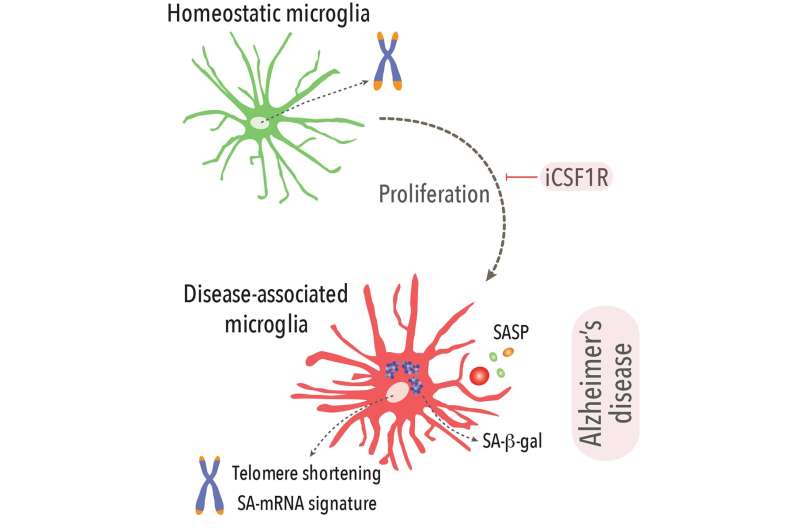Scientists discover immune cell behavior that plays a key role in Alzheimer’s disease

A new study has pinpointed a small group of cells in the brain which could be crucial to understanding how Alzheimer’s disease begins and how to slow its progression. This discovery could help research into treatment for the disease by focusing on this key group of cells in the brain.
Alzheimer’s disease is the most common type of dementia, affecting between 50 and 75 per cent of those diagnosed. There are currently around 850,000 people with dementia in the UK. This is projected to rise to 1.6 million by 2040.
“Alzheimer’s disease evolves over decades but we currently lack an understanding of the events that take place in the early stages,” explained Dr. Diego Gomez-Nicola of the University of Southampton who led this research.
The Southampton team had already discovered that microglia, the brain’s main immune cells, are the first cells to react to the build-up of a protein called amyloid, which is associated with the development of dementia, by increasing in number.
In this new study, published in the journal Cell Reports, Dr. Gomez-Nicola and his team set out to explore whether this sustained encounter between microglia and amyloid would impose long-lasting changes in microglia that would influence the speed at which the disease develops.
Using a mouse model of Alzheimer’s disease-like pathology, the researchers found key evidence that the sustained activation of microglia leads to a fraction of these cells becoming senescent, a state of metabolic and inflammatory dysfunction. These senescent microglia in turn accelerated the accumulation of amyloid, impacting the early stages of the development of the disease. The findings were validated in human post-mortem samples from patients with Alzheimer’s disease.
“We have previously established that microglia respond to toxic amyloid by proliferating, which is part of their function as immune cells, they are trying to contain a foreign protein,” said Dr. Gomez-Nicola.
“However, this is the first time we have seen the long-term consequences of this proliferation on the cells, and the impact for the development of the disease.”
The research team then discovered that by halting the proliferation of microglia in mice, they could slow down the rate at which senescence occurred which in turned reduced the level of toxic amyloid in the brain. This could have major implications for slowing down the progression of the disease.
Dr. Gomez-Nicola continued, “These findings have pinpointed a small group of microglia that have a profound influence on the rate at which Alzheimer’s disease accelerates. As well as providing scientists with more insight into the starting point of the disease, it will enable future research and drug discovery efforts to be refined to target these senescent cells specifically, and hopefully expedite further breakthroughs in the search for effective treatments.”
Source: Read Full Article



